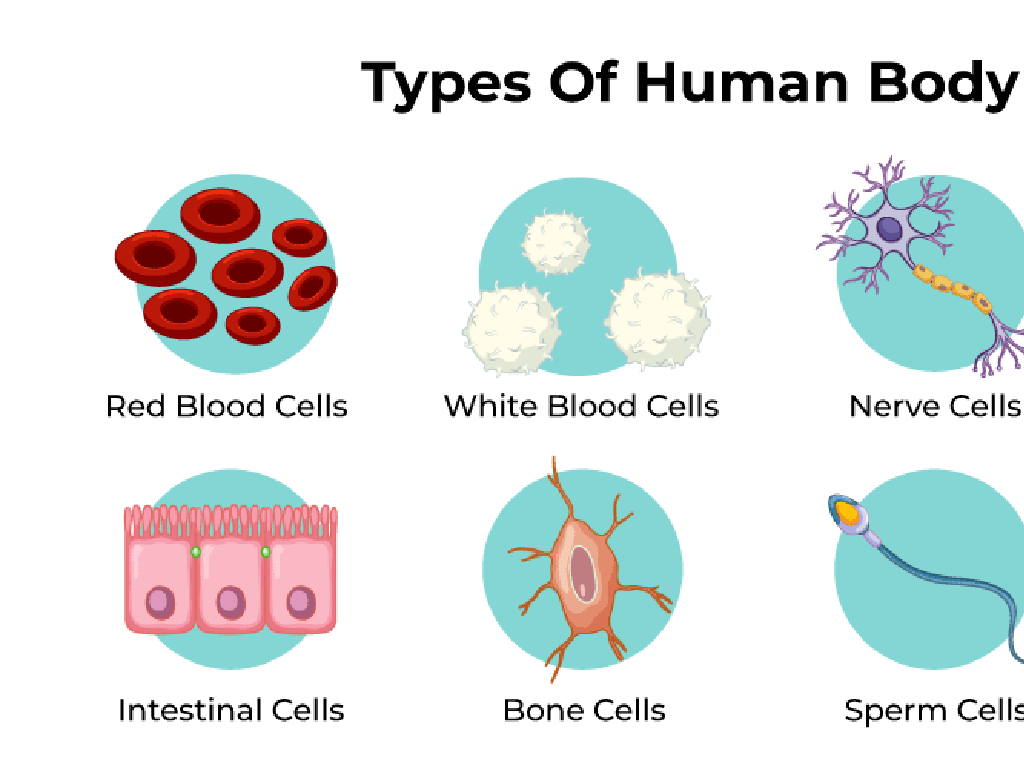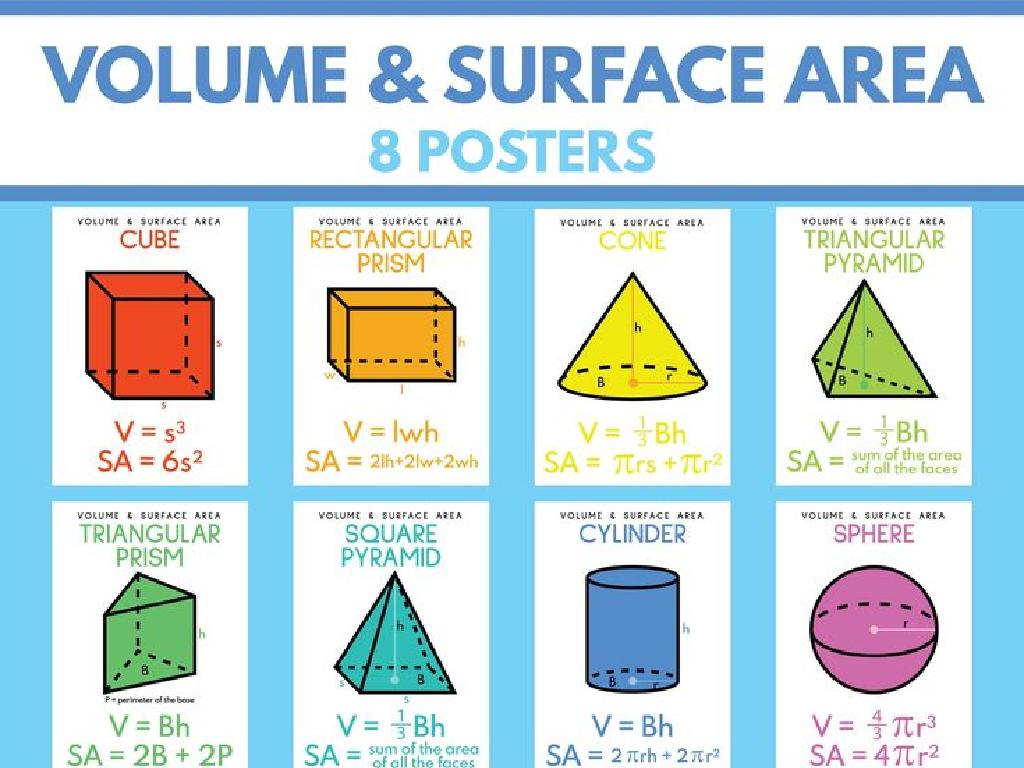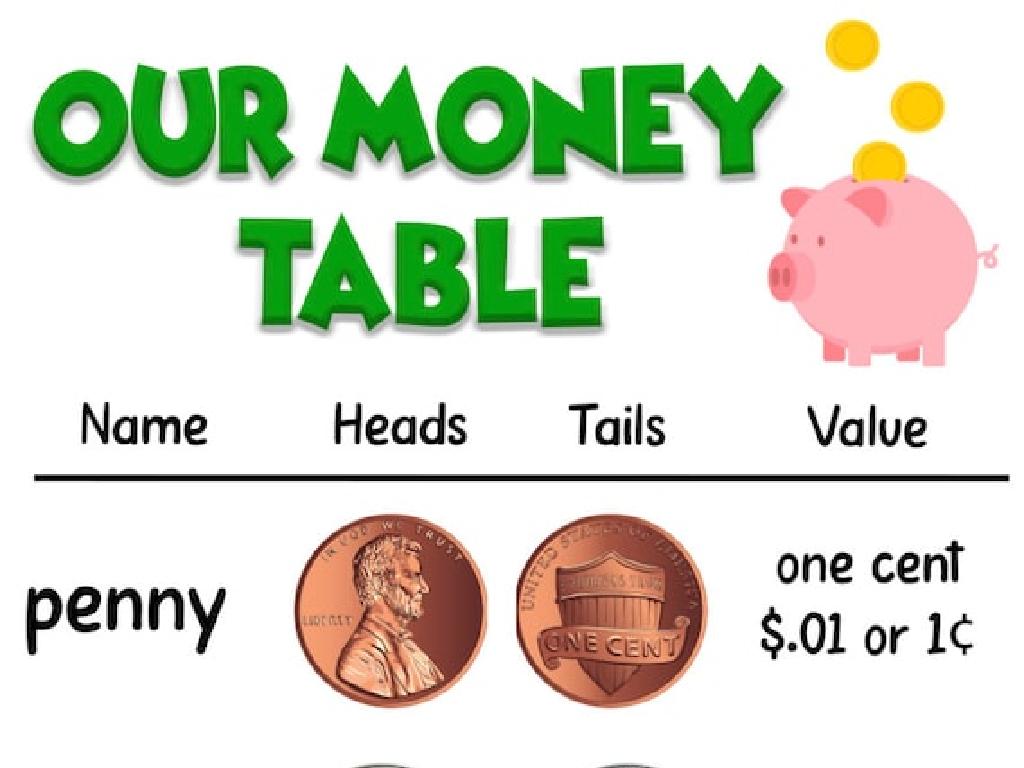Compare Decimals Using Models
Subject: Math
Grade: Fourth grade
Topic: Decimals
Please LOG IN to download the presentation. Access is available to registered users only.
View More Content
Welcome to Decimals!
– Greetings, young mathematicians!
– Decimals represent parts of a whole
– Like pieces of a pie, decimals show fractions
– Decimals are everywhere in life
– Used in money, measurements, and more
– Understanding decimals is key
– Helps with math in school and daily activities
|
Begin the class with a warm welcome, setting a positive tone for learning. Introduce decimals by comparing them to something familiar, like slices of a pie, to illustrate how they represent fractions of a whole. Emphasize the prevalence of decimals in everyday life, such as in currency and measurements, to highlight their importance. Explain that a solid understanding of decimals is crucial for success in math and practical situations they will encounter. Encourage students to think of examples where they have seen decimals used outside of school to make the concept more relatable.
Understanding Decimals
– What is a decimal?
– A number with a decimal point, showing values less than one.
– Decimal place values
– Tenths, hundredths, thousandths are positions after the decimal point.
– Decimals in daily life
– Money is a common example: $0.25, $1.50, $2.75.
– Comparing decimals
– Use models like grids or number lines to visualize and compare.
|
This slide introduces the concept of decimals to fourth-grade students. Begin by defining a decimal and explaining the purpose of the decimal point. Then, discuss the place values immediately following the decimal point: tenths, hundredths, and thousandths, ensuring students understand the hierarchy of these values. Provide relatable examples such as money to illustrate decimals in everyday life. Finally, introduce the concept of comparing decimals using visual models, which will help students grasp the concept of relative value between decimals. Encourage students to think of other examples of decimals they encounter daily and to practice placing them on a number line or grid for comparison.
Visualizing Decimals with Models
– Introduce decimal models
– Base-ten blocks and decimal grids help us see decimals.
– Represent decimals with models
– Show 0.3 with 3 tenths blocks or shade 3/10 of a grid.
– Visual comparison of decimals
– Place two models side by side to observe which is larger.
– Practice with decimal grids
|
Begin by introducing the concept of decimal models, such as base-ten blocks and decimal grids, which are tools to help students visualize and understand decimals. Demonstrate how to represent decimals by using these models, for example, showing 0.3 with three tenths blocks or shading three out of ten parts of a decimal grid. Then, guide students on how to compare two decimals visually by placing the corresponding models side by side to determine which decimal is larger or smaller. Encourage students to practice with decimal grids by shading in the appropriate number of squares to represent different decimals and comparing them with their peers.
Comparing Decimals Using Models
– Use a number line to compare decimals
– Place decimals on a number line to see which is larger or smaller.
– Understand >, <, and = with decimals
– Decimals can be greater than, less than, or equal to others.
– Examples: Comparing with models
– Compare 0.75 and 0.8 using blocks or drawings to visualize which is larger.
|
This slide introduces students to the concept of comparing decimals using visual models such as number lines and block diagrams. Start by explaining how to place decimals on a number line and use this to determine which numbers are greater or smaller. Discuss the meaning of greater than (>), less than (<), and equal to (=) in the context of decimals. Provide clear examples using models, such as representing decimals with blocks or shaded areas, to help students visualize and understand the comparison process. Encourage students to practice by creating their own models and comparing different decimals to reinforce the concept.
Let’s Practice Comparing Decimals!
– Work on practice problems
– Use models for decimal comparison
– Visual aids like fraction bars or grids to show decimals
– Explain your reasoning
– Why is 0.5 greater than 0.45? Think about place value.
– Group discussion on answers
|
This slide is designed for an interactive class activity where students will engage in comparing decimals using visual models. Start by solving a few problems as a class to demonstrate the process. Encourage the use of models such as fraction bars, number lines, or grids to visually represent and compare the decimals. Prompt students to articulate their thought process when determining which decimal is greater or lesser, reinforcing the concept of place value. After individual or small group work, bring the class together for a discussion to compare answers and reasoning, fostering a collaborative learning environment. Provide guidance and clarification as needed, ensuring that each student grasitates the concept of comparing decimals.
Class Activity: Decimal Comparison Game
– Introduction to the Decimal Game
– Understand game rules and objectives
– Learn to compare decimals with fun!
– Pair up for the decimal challenge
– Work together with a classmate
– Engage in friendly competition
– Who can order decimals correctly first?
|
This interactive class activity is designed to help students understand decimal comparison in a fun and engaging way. Introduce the Decimal Comparison Game by explaining that it’s a friendly contest to see who can arrange decimals in the correct order the fastest. Go over the rules, such as how to determine which decimal is greater and what to do in case of a tie. Make sure the objectives are clear: to practice comparing decimals and to reinforce the concept using visual models. Divide the class into pairs, encouraging collaboration and peer learning. As students play, circulate around the room to offer guidance and ensure everyone is participating. Possible variations of the game could include using number lines, decimal cards, or interactive whiteboard activities. This hands-on approach will help solidify the students’ understanding of decimal places and their values.
Wrapping Up: Decimals
– Review of decimal comparison
– Remember, models help visualize decimal places
– Final Q&A session
– Homework assignment
– Compare decimals worksheet due next class
– Practice makes perfect!
– Keep practicing with models at home!
|
As we conclude today’s lesson on comparing decimals using models, it’s important to recap the main points. Remind students how models like base-ten blocks or number lines can make it easier to understand and compare decimals. Address any questions students may still have to ensure clarity. For homework, assign a worksheet that requires students to compare decimals, reinforcing today’s learning. Encourage them to use models to assist with their homework if they’re struggling with the concept. Remind them that consistent practice is key to mastering the comparison of decimals.






